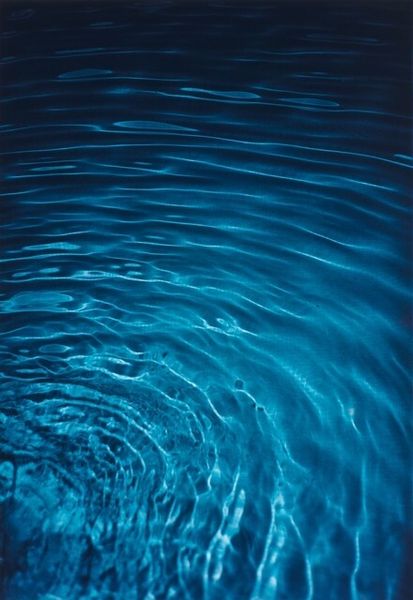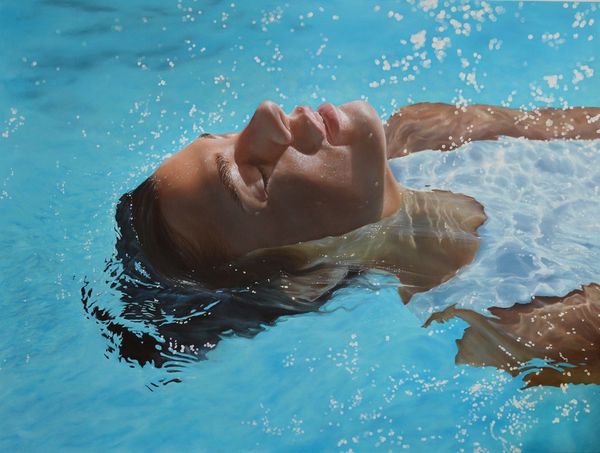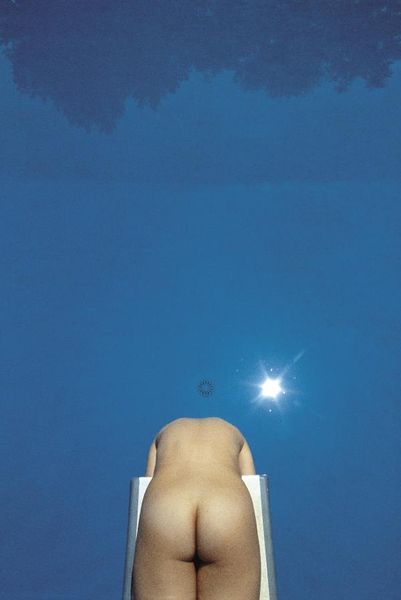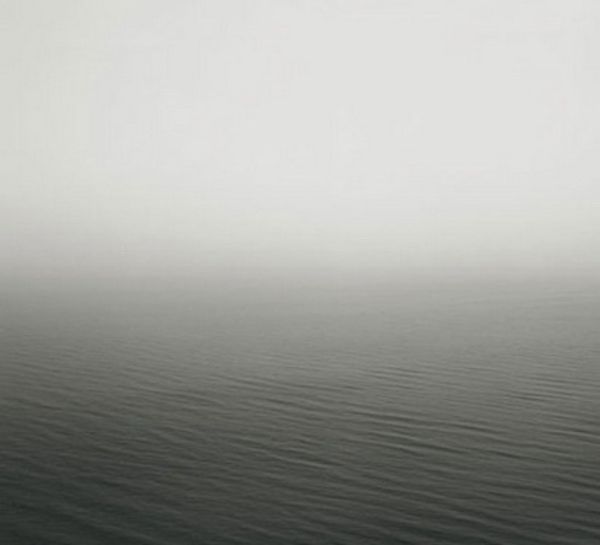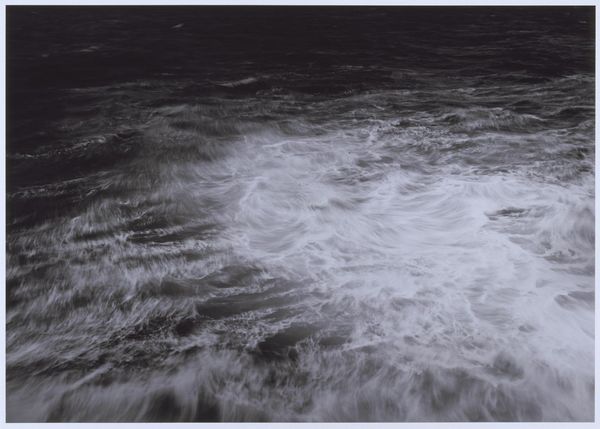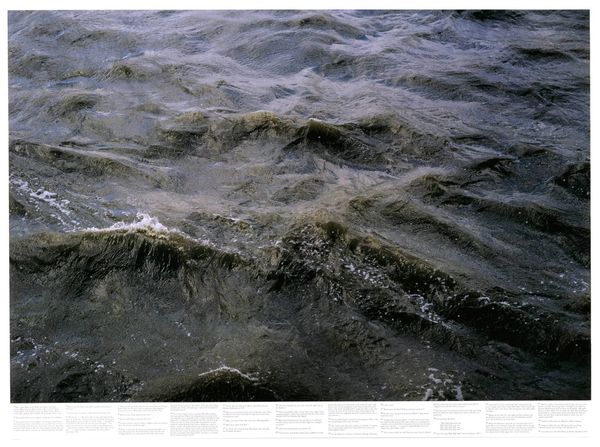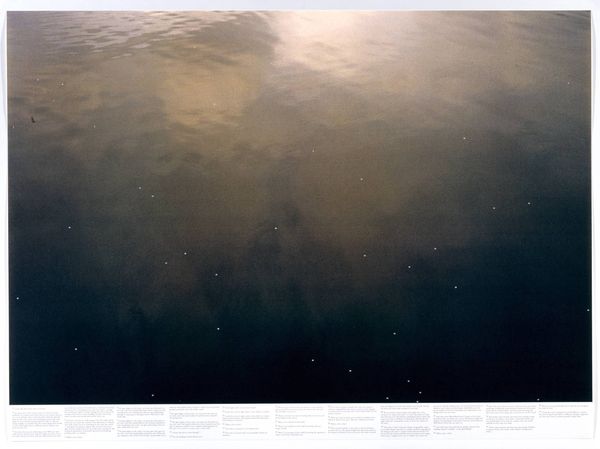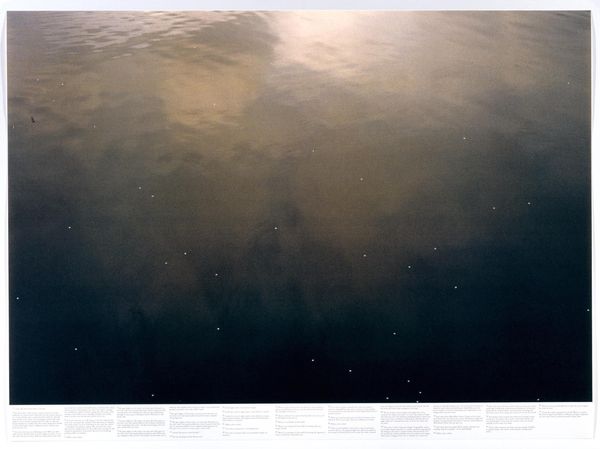
print, cyanotype, photography
#
contemporary
#
conceptual-art
# print
#
landscape
#
cyanotype
#
photography
#
abstraction
Dimensions: image: 27.8 x 40.5 cm (10 15/16 x 15 15/16 in.) sheet: 30.5 x 40.5 cm (12 x 15 15/16 in.) mount: 30.8 x 40.8 cm (12 1/8 x 16 1/16 in.)
Copyright: National Gallery of Art: CC0 1.0
Curator: Alright, let's dive into this print by Wolfgang Tillmans, created in 1999. It’s titled "Konzentrische Kreise," which translates to "Concentric Circles." What are your immediate thoughts when you look at it? Editor: Pure tranquility. It's like staring into the stillest, bluest dream. The water almost hums, you know? Makes you wanna dip your toes in. But then there's this sense of something...infinite. A tiny disturbance in a massive, unknowable blueness. Curator: The blueness is certainly striking. Tillmans is known for his innovative approach to photography, and he often plays with abstraction, even when depicting seemingly mundane subjects. The cyanotype process he may have used to produce the piece can also have interesting effects. Would you say this plays into themes of contemporary photography at all? Editor: Oh, absolutely. He takes the everyday – a splash in a pond – and elevates it. Makes you consider it. You think of Duchamp plunking a urinal into a gallery and making everyone question "art." But this...this makes me question "reality," which I guess can have its root in conceptualism as well, if you think about it. Is that bug creating all those ripples the center of our world? Maybe. Makes you ponder the power of small disturbances and conceptual conceits, no? Curator: Yes, definitely. And that brings in a social dimension, I think. How does this work make us think about our place in the world and the way institutions portray photography as art? Is this documentation, or pure aesthetic expression, or some blend of the two? Tillmans really makes us reflect on the institutional framing around photographic imagery. Editor: It's cool that you said that. A drop of pigment makes such big waves, but who is it truly reaching and how? But then I realize...who cares? This has got the power to transcend. Makes us stop and think about time and space – how far they actually stretch. I've enjoyed floating here in its ocean of inquiry. Curator: Me too. Thanks for joining me in looking closely. This examination highlights some exciting discussion about its history and role.
Comments
No comments
Be the first to comment and join the conversation on the ultimate creative platform.

